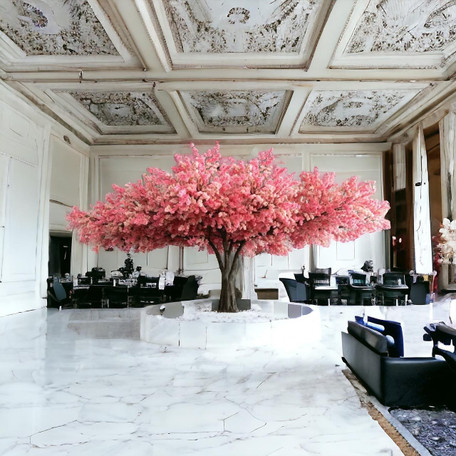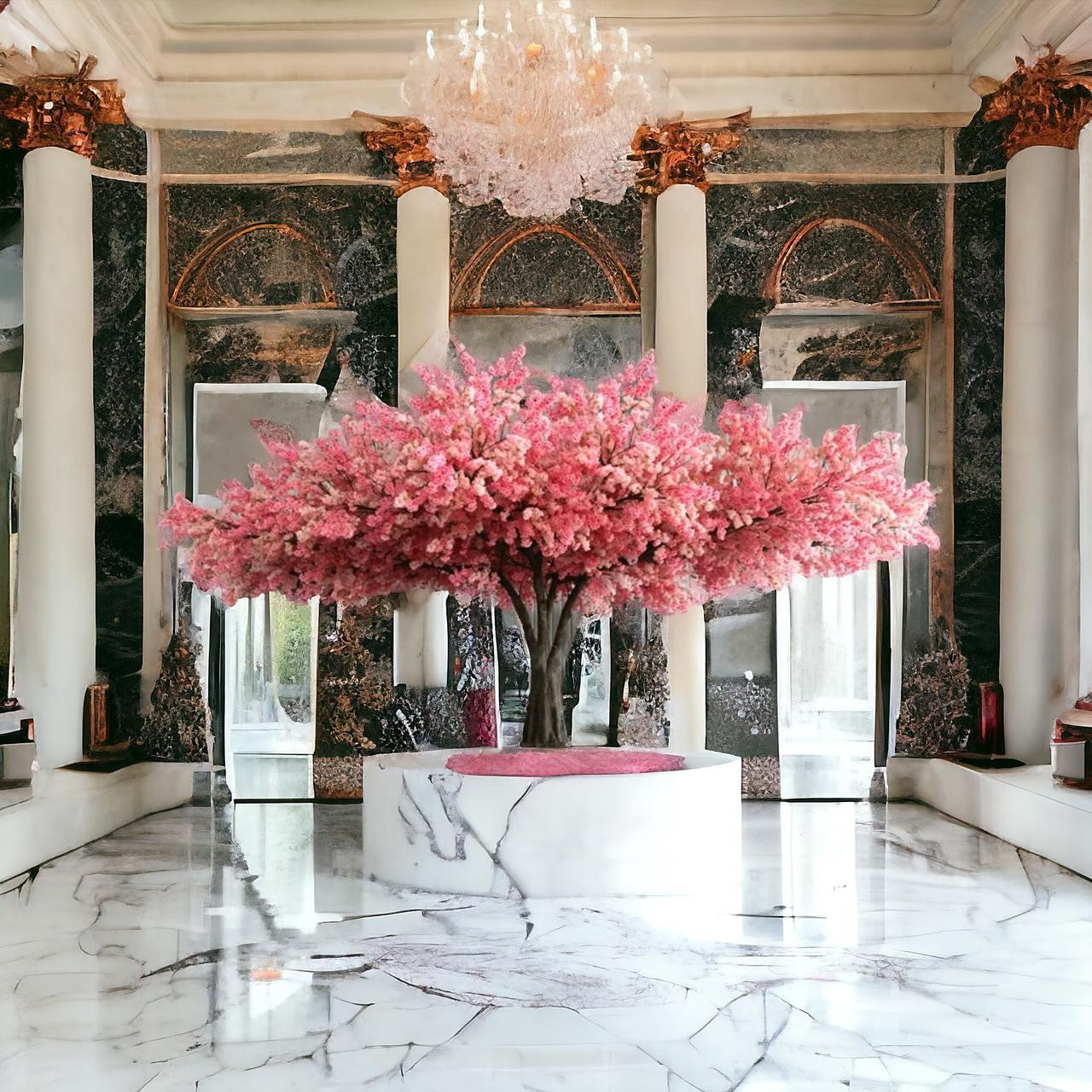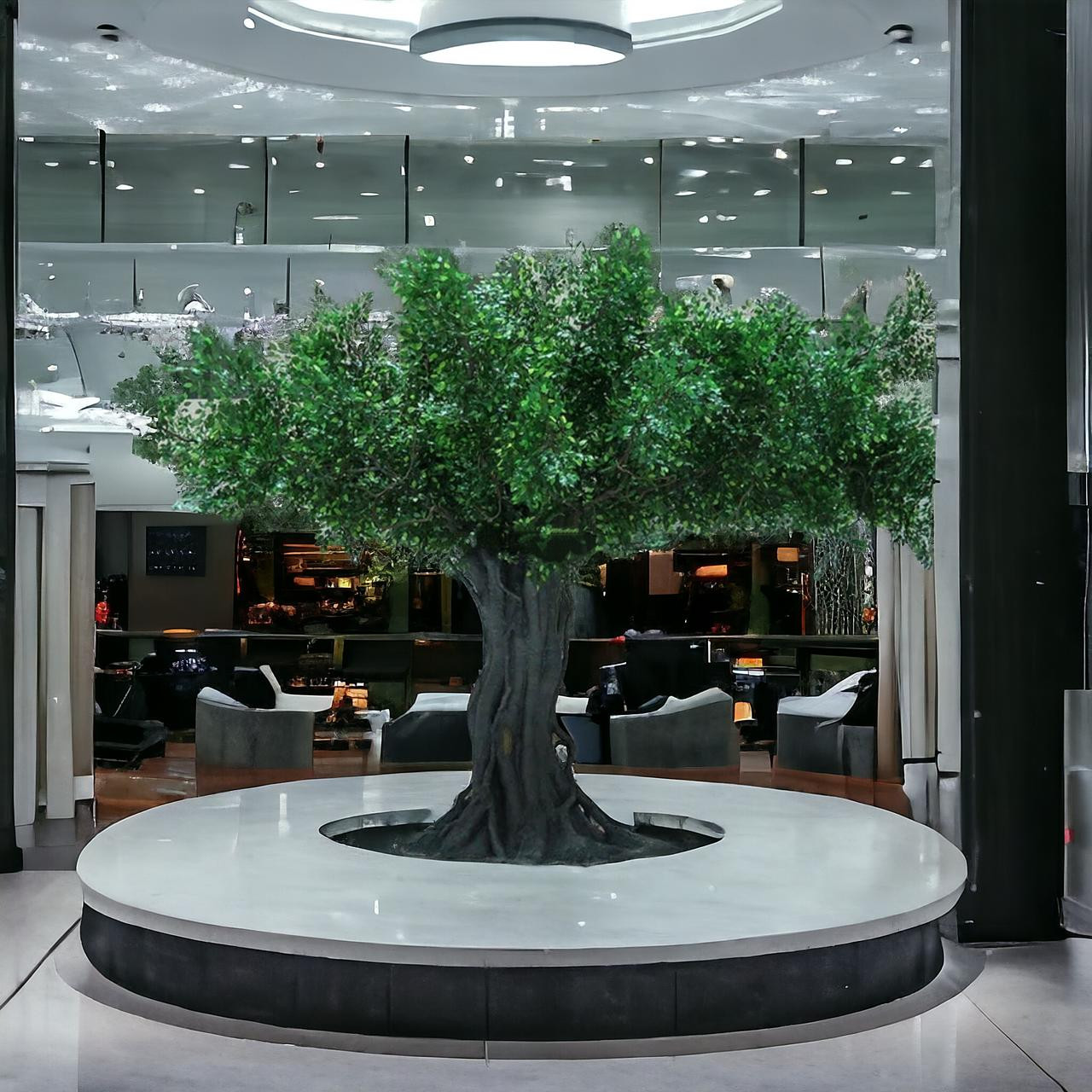Faux Trees - The Perfect Low-Maintenance Greenery for Busy Restaurants and Hotels
11th Aug 2024
Faux Trees: The Perfect Low-Maintenance Greenery for Busy Restaurants and Hotels
In the bustling world of restaurants and hotels, where every detail contributes to creating a memorable guest experience, the importance of aesthetics cannot be overstated. From the moment guests walk through the door, they are enveloped by an atmosphere that sets the tone for their entire stay or meal. One of the most effective ways to enhance this ambiance is through the strategic use of greenery. However, maintaining real plants in high-traffic environments can be challenging, time-consuming, and costly. This is where faux trees step in, offering a perfect solution that combines the beauty of nature with the convenience that busy hospitality businesses demand.
The Appeal of Greenery in Hospitality
Greenery has long been associated with tranquility, relaxation, and a connection to nature—qualities that are highly desirable in the hospitality industry. For restaurants, the presence of plants can transform a dining space, making it feel more welcoming and intimate. In hotels, greenery can soften the edges of a modern design, bring warmth to a cold lobby, or create a serene outdoor oasis.
But while the appeal of plants is undeniable, the reality of maintaining them is another story. Live plants require a consistent commitment to care, including watering, pruning, pest control, and ensuring they receive the right amount of light. For many hospitality businesses, especially those in urban environments or with limited staff, this level of maintenance can be impractical. This is where faux trees come into their own, providing all the aesthetic benefits of greenery with none of the associated upkeep.
Why Faux Trees Are Ideal for Restaurants and Hotels
1. No Watering, No Worries
One of the most significant advantages of faux trees is that they do not require watering. This might seem like a minor benefit, but consider the logistics of maintaining live trees in a busy restaurant or hotel. Watering needs can vary greatly depending on the type of plant, its size, and the environment it's in. Inconsistent watering can lead to plants wilting, browning, or even dying, which not only looks unsightly but also requires replacement—adding to costs and labor.
Faux trees, on the other hand, maintain their appearance day in and day out, without the need for any water. This means no more worrying about overwatering, underwatering, or the potential for water damage to floors and furniture. In environments where staff are focused on providing top-notch service, the last thing you want is for them to be distracted by the needs of the plants.
2. No Special Lighting Required
Light is another critical factor in the care of live plants. Different species have varying light requirements, ranging from full sun to partial shade to low light. In many restaurants and hotels, particularly those in urban settings, natural light can be a limited resource. This often leads to plants being placed in less-than-ideal locations, where they struggle to thrive.
With faux trees, light is no longer a concern. These artificial beauties can be placed anywhere—from dimly lit corners to areas with no natural light at all—without any risk of them wilting or losing their color. This flexibility allows for more creative and strategic use of greenery in design, enhancing the aesthetic of the space without the limitations imposed by natural light.
3. Zero Pruning and Maintenance
Pruning is an essential part of maintaining live trees, ensuring they stay healthy, well-shaped, and visually appealing. However, this task requires both knowledge and time, as improper pruning can damage the plant or detract from its appearance. In a busy restaurant or hotel, where the focus is on serving guests and maintaining operations, dedicating time to plant care can be a significant burden.
Faux trees eliminate the need for pruning altogether. They are designed to look perfectly shaped and lush from the moment they are installed, with no further maintenance required. This not only saves time but also ensures that the greenery in your space always looks its best, contributing to a consistently polished appearance.
4. Durability in High-Traffic Environments
Restaurants and hotels are high-traffic environments where furniture, decor, and even plants are subject to significant wear and tear. Live plants, particularly those with delicate foliage, can suffer in these settings—leaves can be damaged, soil can be disturbed, and plants can be knocked over. This can lead to frequent replacements, adding to both costs and environmental waste.
Faux trees, on the other hand, are designed to withstand the rigors of busy environments. Made from durable materials, they are resistant to damage and can maintain their appearance for years with minimal care. This durability makes them an ideal choice for hospitality businesses looking to create a beautiful, low-maintenance environment that can stand up to the demands of daily use.
Aesthetic Versatility of Faux Trees
In addition to their practical benefits, faux trees offer incredible versatility in terms of design and aesthetics. Whether your restaurant or hotel has a modern, minimalist design or a more traditional, opulent style, there is a faux tree that can complement and enhance your space.
1. Variety of Styles and Sizes
Faux trees come in a wide range of styles and sizes, from towering palms and lush ferns to delicate bonsai and classic topiaries. This variety allows you to choose the perfect tree to match the scale and design of your space. For example, a large faux ficus or olive tree can serve as a stunning focal point in a hotel lobby, while smaller faux plants can add a touch of greenery to individual dining tables in a restaurant.
The ability to choose the exact size and style of your faux trees also means you can create a cohesive design throughout your space, using different types of trees to define areas or create visual interest. For instance, tall faux trees can be used to create natural partitions in a restaurant, providing privacy for diners while maintaining an open, airy feel.
2. Consistency in Appearance
One of the challenges with live plants is their natural variability—no two plants are exactly alike, and even the same species can look different depending on its environment and care. This can make it difficult to achieve a consistent look, particularly in larger spaces where multiple plants are needed.
Faux trees, however, are crafted to be identical, allowing you to maintain a consistent appearance throughout your space. This consistency is particularly important in hospitality settings, where attention to detail is key to creating a polished, professional look. With faux trees, you can ensure that every corner of your restaurant or hotel reflects the same high standard of design.
3. Customization Options
For restaurants and hotels looking to create a truly unique environment, faux trees offer a range of customization options. Many manufacturers offer bespoke services, allowing you to choose the exact type, size, and finish of your trees. You can even customize the foliage and branches to match your branding or theme, ensuring that your greenery is not just an afterthought, but an integral part of your overall design.
In addition, faux trees can be adapted to suit different seasons or events. For example, a faux tree in a hotel lobby could be decorated with lights and ornaments during the holiday season, or adorned with flowers and ribbons for a special event. This adaptability makes faux trees a versatile and valuable asset for any hospitality business.
Sustainability and Environmental Considerations
While faux trees are often seen as a purely aesthetic choice, they also offer significant environmental benefits that make them an attractive option for eco-conscious businesses.
1. Reducing Water Usage
One of the most significant environmental advantages of faux trees is their ability to reduce water usage. The hospitality industry is increasingly aware of the need to conserve resources, and water is a critical one. Live plants require regular watering, which can add up to significant water usage over time, particularly in larger spaces with many plants.
Faux trees, on the other hand, require no water at all. This not only saves on water costs but also aligns with broader sustainability goals, helping businesses reduce their environmental footprint.
2. Eliminating the Need for Chemical Treatments
Live plants often require chemical treatments, such as fertilizers and pesticides, to stay healthy and vibrant. These chemicals can have harmful effects on the environment, contaminating soil and water, and posing risks to human health.
With faux trees, there is no need for chemical treatments, as they are immune to pests and diseases. This eliminates the environmental impact associated with these chemicals, making faux trees a more sustainable choice.
3. Longevity and Reduced Waste
Another important environmental consideration is the longevity of faux trees. High-quality faux trees are built to last for many years, meaning they do not need to be replaced as frequently as live plants. This durability reduces the waste associated with plant replacement and disposal, further contributing to sustainability efforts.
In contrast, live plants have a much shorter lifespan, particularly in challenging indoor environments where they may struggle to thrive. The frequent replacement of live plants not only adds to costs but also contributes to waste, as plants are often discarded when they become unhealthy or outgrow their space.
The Economic Advantages of Faux Trees
In addition to their practical, aesthetic, and environmental benefits, faux trees offer significant economic advantages for restaurants and hotels. These benefits make them a smart investment for businesses looking to enhance their spaces without incurring unnecessary costs.
1. Lower Maintenance Costs
One of the most obvious economic benefits of faux trees is the reduction in maintenance costs. Live plants require regular care, including watering, pruning, and pest control, all of which can add up in terms of labor and materials. For businesses with large indoor spaces or extensive landscaping, these costs can be substantial.
Faux trees, by contrast, require minimal maintenance. Once installed, they need only occasional dusting or cleaning to keep them looking their best. This reduction in maintenance not only saves on labor costs but also frees up staff to focus on other tasks, improving overall efficiency.
2. Reduced Replacement Costs
Live plants, particularly in challenging environments, may need to be replaced frequently due to health issues, growth, or simply outgrowing their space. This ongoing replacement cycle can be costly, particularly for larger plants or those that are difficult to source.
Faux trees, however, have a much longer lifespan. High-quality artificial trees can last for many years without needing replacement, providing a consistent aesthetic at a fraction of the cost of maintaining live plants. This longevity makes them a cost-effective solution for businesses looking to create a lasting impression.
3. Flexible Budgeting
Faux trees offer flexibility in budgeting that live plants cannot match. Because they do not require ongoing care, businesses can accurately predict the costs associated with their greenery and plan accordingly. This predictability is particularly valuable for businesses with tight budgets or those looking to allocate resources efficiently.
Additionally, the initial investment in faux trees can be spread out over time, as they do not need to be replaced as frequently as live plants. This allows businesses to invest in other areas, such as marketing, staff training, or guest services, without sacrificing the quality of their decor.
Case Studies: Success Stories from the Hospitality Industry
To illustrate the benefits of faux trees in real-world settings, consider the following case studies from restaurants and hotels that have successfully integrated artificial greenery into their spaces.
1. The Urban Oasis: A Boutique Hotel in New York City
A boutique hotel in New York City faced the challenge of creating a green, welcoming environment in a space with limited natural light and high foot traffic. The hotel’s design team chose to incorporate faux trees throughout the lobby, hallways, and guest rooms, selecting species that complemented the hotel’s modern, minimalist aesthetic.
The result was a stunning transformation. The faux trees added warmth and natural beauty to the space, creating a calming oasis in the heart of the city. The hotel’s guests frequently commented on the greenery, noting how it enhanced their experience. Additionally, the hotel was able to reduce its maintenance costs and allocate resources to other areas, improving overall operations.
2. The Coastal Retreat: A Restaurant on the California Coast
A popular restaurant on the California coast wanted to create a dining experience that reflected the natural beauty of its surroundings. However, the restaurant’s indoor space was exposed to salt air and fluctuating temperatures, making it difficult to maintain live plants.
The restaurant opted to install faux trees that mimicked the local flora, including coastal pines and ferns. These trees were strategically placed to create a seamless transition between the indoor and outdoor dining areas, enhancing the restaurant’s connection to its environment.
The faux trees not only contributed to the restaurant’s aesthetic appeal but also provided a practical solution to the challenges posed by the coastal climate. Guests frequently praised the restaurant’s design, and the business saw an increase in social media engagement as diners shared photos of the beautiful space.
Conclusion: Faux Trees as the Future of Hospitality Design
In today’s competitive hospitality industry, creating a memorable guest experience is more important than ever. Greenery plays a crucial role in shaping the ambiance of restaurants and hotels, contributing to the overall aesthetic and atmosphere. However, the challenges of maintaining live plants in high-traffic environments can be significant, leading many businesses to seek alternative solutions.
Faux trees offer the perfect blend of beauty, convenience, and sustainability, making them an ideal choice for busy restaurants and hotels. With no need for watering, pruning, or special lighting, faux trees provide all the benefits of greenery with none of the associated burdens. Their durability, versatility, and cost-effectiveness make them a smart investment for businesses looking to enhance their spaces and create a lasting impression on their guests.
As the hospitality industry continues to evolve, faux trees are likely to play an increasingly important role in design, offering a practical and aesthetically pleasing solution for businesses around the world. Whether you’re looking to create a serene retreat in a bustling city or a vibrant dining space on the coast, faux trees can help you achieve your vision with ease and elegance.





